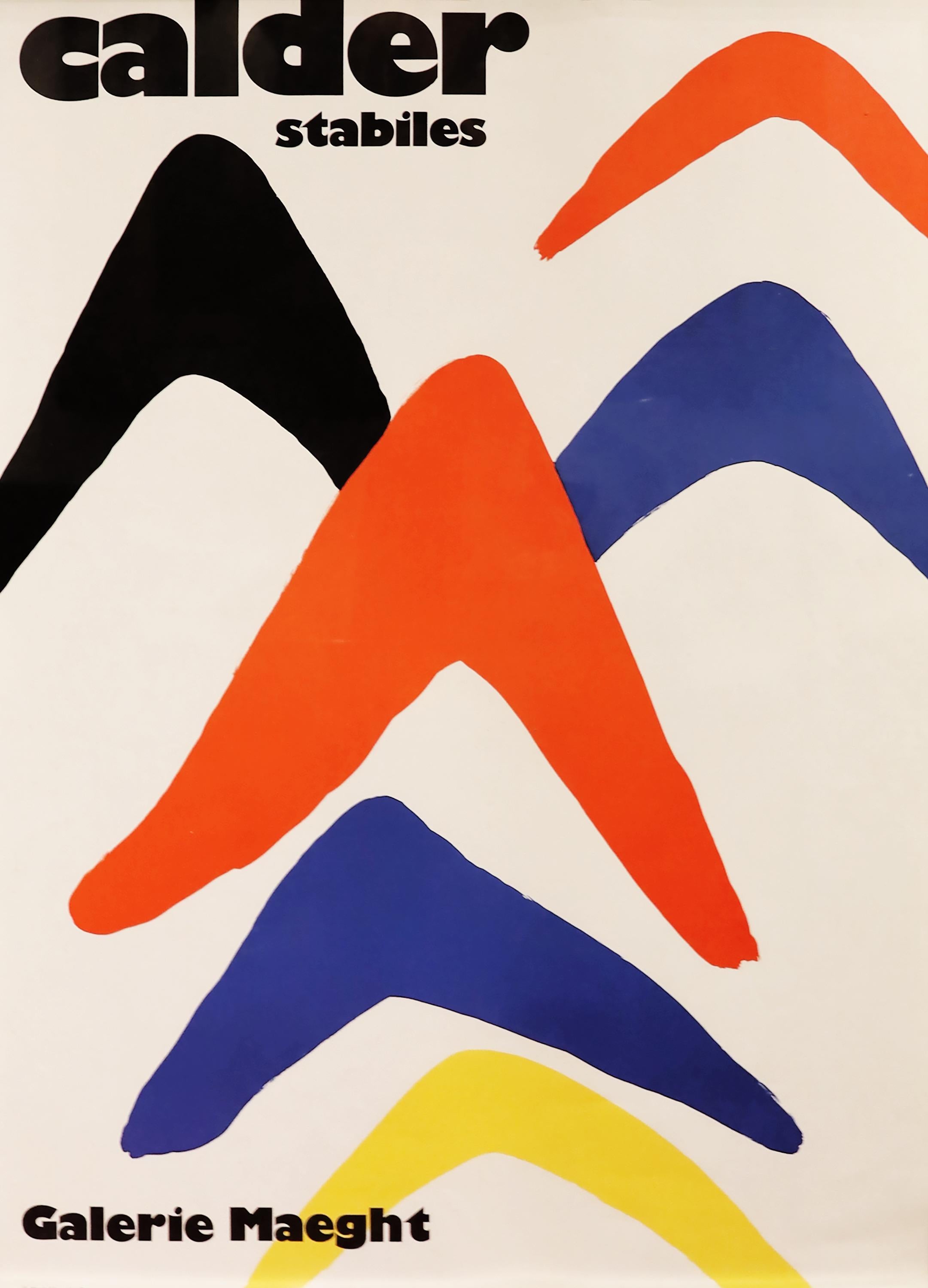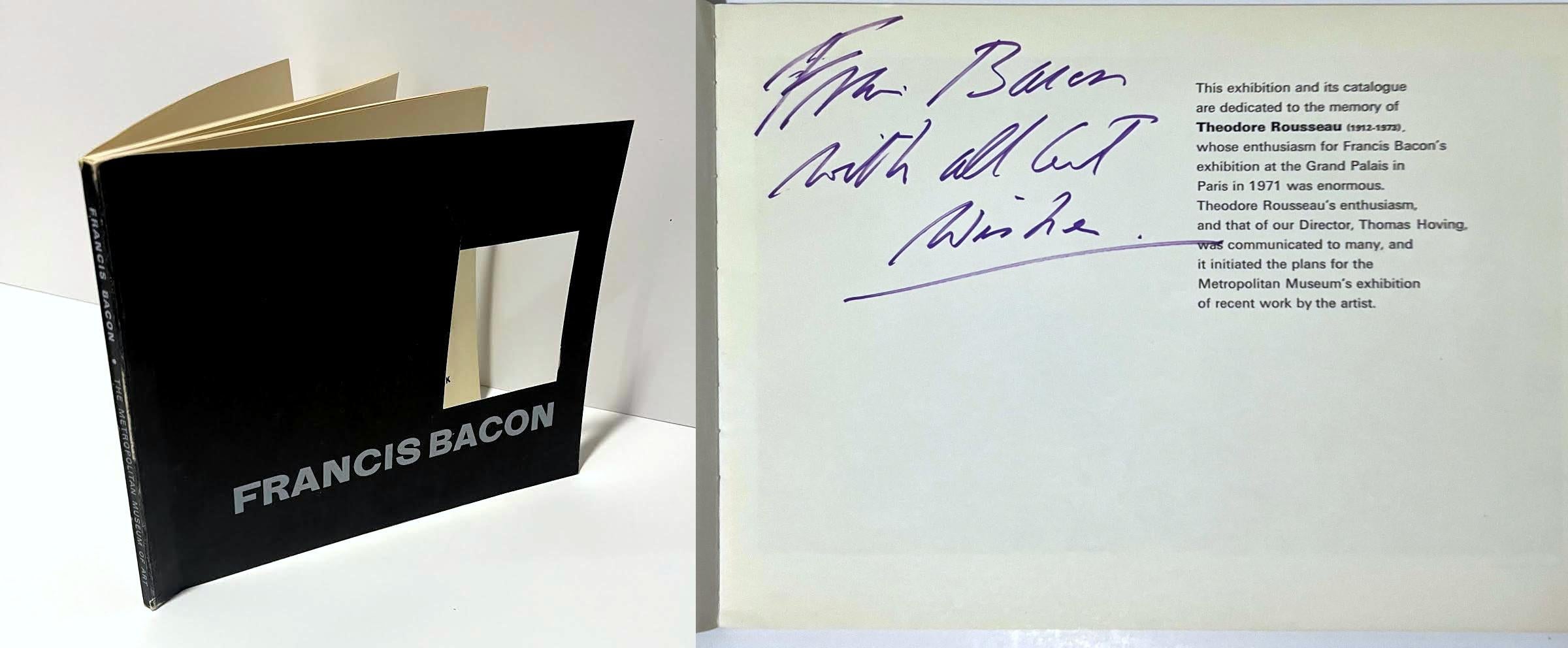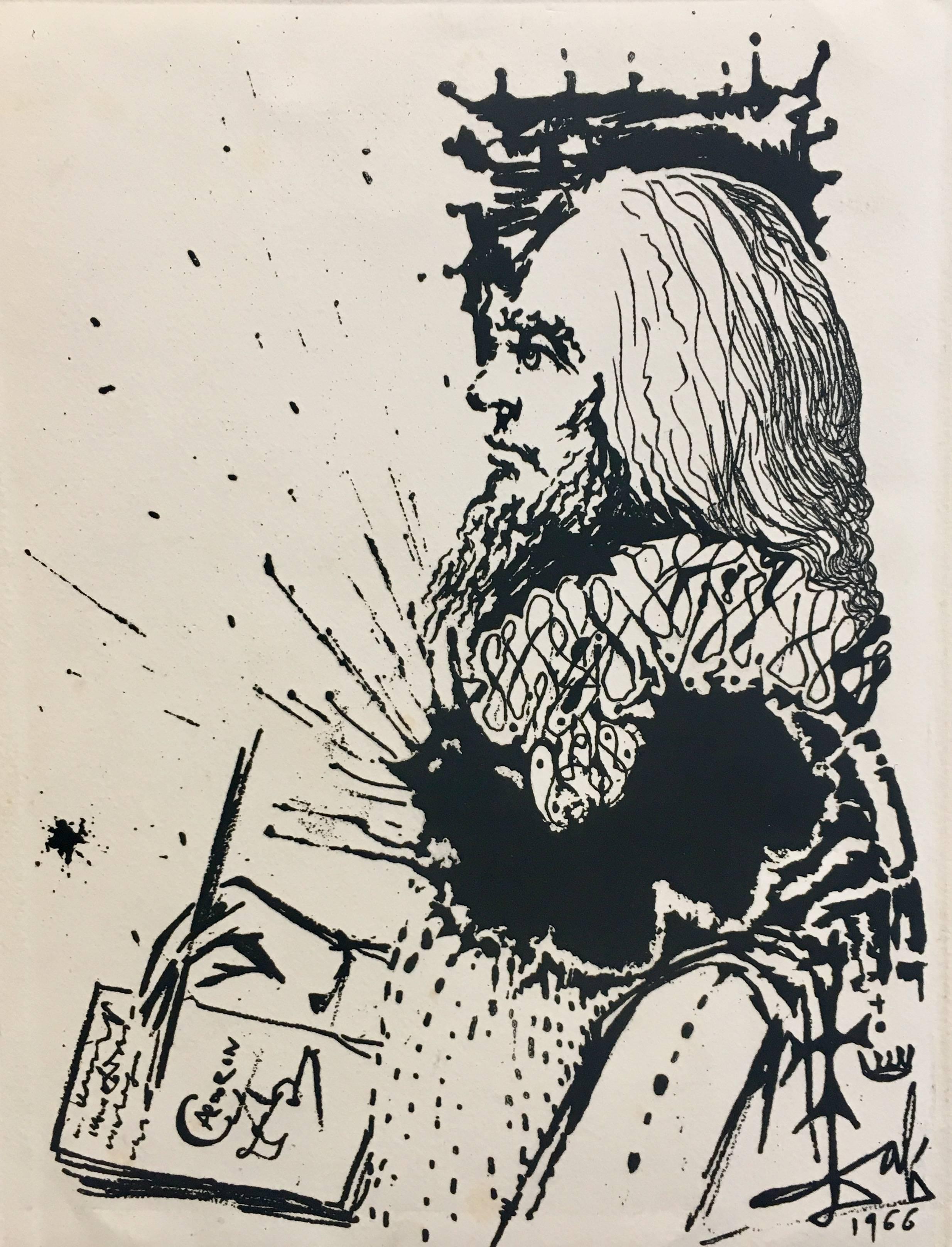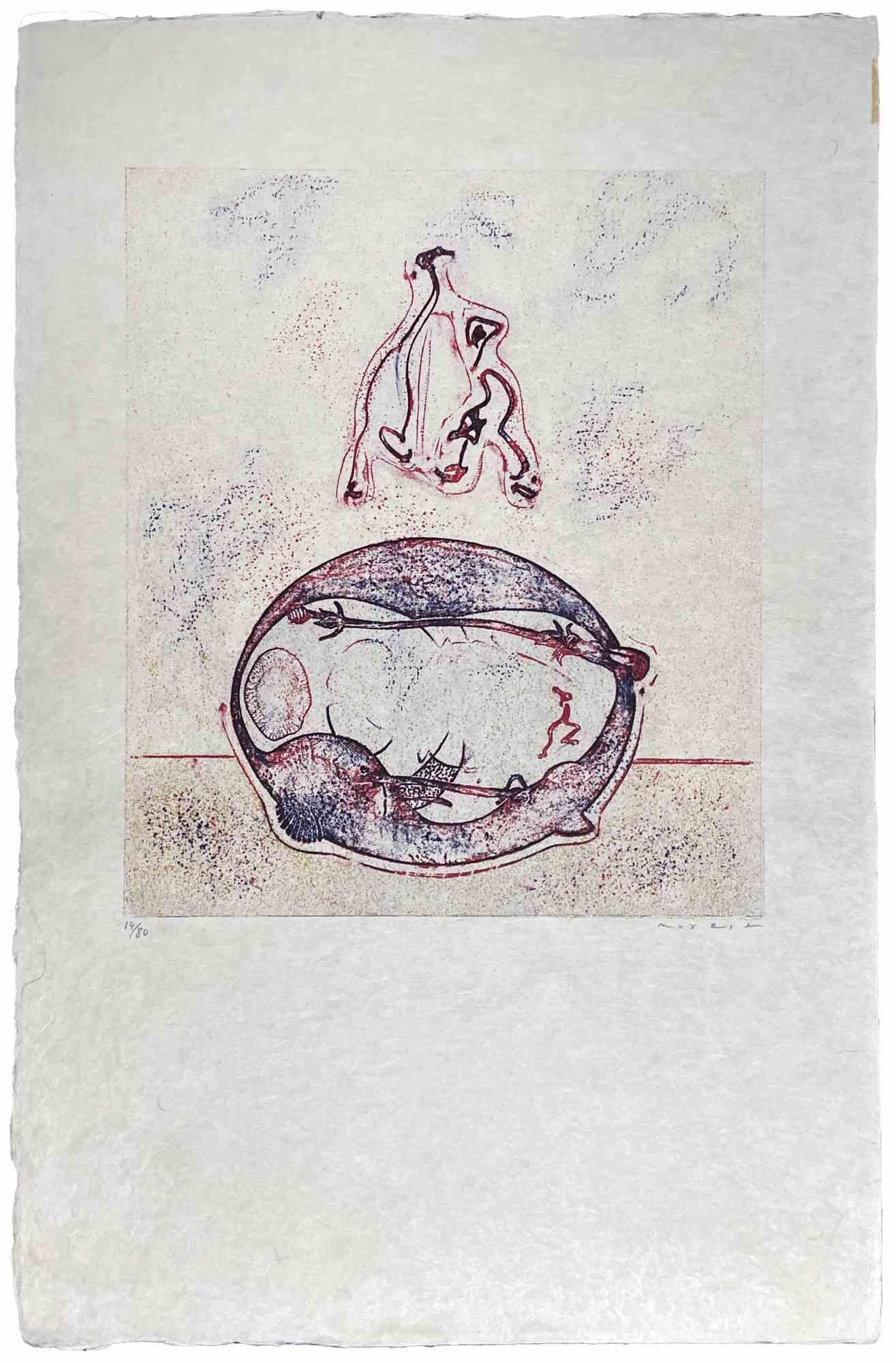Items Similar to Teres de Grand Feu
Video Loading
Want more images or videos?
Request additional images or videos from the seller
1 of 10
(after) Joan MiróTeres de Grand Feu
About the Item
Terres de Grand Feu
Miro Artigas
Galerie Maeght Fine Art Poster Print
30 x 21 inches
31 x 22 inches with frame
Joan Miro (Spanish, 1893-1983)
Joan Miro was born in Barcelona, Spain on April 20, 1893, the son of a watchmaker. From 1912 he studied at the Barcelona Ecole des Beaux-Arts and the Academie Gali. In the first quarter of the 20th century, Barcelona was a cosmopolitan, intellectual city with a craving for the new in art, music and literature. But it was not the place where great art was being made. That place was Paris and Miro established himself there at the age of twenty-six. He made friends with Pablo Picasso, Alexander Calder, Ernest Hemingway, Max Ernst and Paul Klee and was accepted as a Surrealist, looking stronger as the years went by. He lived alone in Paris in total poverty, but everytime he went out he wore a monocle and white spats. He kept his brushes clean, waxed and polished the floor of his studio and arranged his canvases in neat order.
Miro went about his career with orderly determination. He wrote to Picasso in 1929 that he was looking for a studio, a dealer and a wife. That same year he married the daughter of family friends. Her name was Pilar Juncosa and they were happily married in 1929 and were together for fifty-four years. They had one daughter, Dolores.
Miro was certainly the most distinguished painter of Catalonia; he was intensely proud of that fact. All of his work was conceived in Montroig (the site of his family's farm). Most important of these was the painting named The Farm which did not sell in Paris and was sold finally to Ernest Hemingway for $250.
He was the most enduring of the Surrealist artists; he first visited the United States in 1947 in order to execute a mural Commission in Cincinnati, Ohio. His reputation had preceded him and he had already had enormous influence on such American artists as Adolph Gottlieb and Mark Rothko, who had adopted his Surrealist automatism and mysterious primitive symbols for their own purposes.
Miro had tried his hand at ceramics, bronze sculpture, printmaking, book illustration, posters, costume design, etc. He was seventy-nine years old when he began his series of monumental bronzes. When he was eighty, he joined forces with a young Spaniard named Josep Royo who was a weaver of tapestries. Miro would spread Royo's tapestries on the floor and proceed to design changes, adding all kinds of materials, painting some areas, even burning areas. The result was a series called Sobreteixims. Miro has transformed the Royo tapestries from admirable folk art into perhaps masterpieces.
He died on Christmas Day in 1983 in Palma Majorca where he had lived and worked for several years.
- Creator:(after) Joan Miró (1893 - 1983, Spanish)
- Dimensions:Height: 30 in (76.2 cm)Width: 21 in (53.34 cm)
- Movement & Style:
- Period:
- Condition:
- Gallery Location:Missouri, MO
- Reference Number:1stDibs: LU747314094002
(after) Joan Miró
Joan Miró i Ferrà was a Spanish painter, sculptor, and ceramicist born in Barcelona. A museum dedicated to his work, the Fundació Joan Miró, was established in his native city of Barcelona in 1975, and another, the Fundació Pilar i Joan Miró, was established in his adoptive city of Palma de Mallorca in 1981.
About the Seller
5.0
Vetted Seller
These experienced sellers undergo a comprehensive evaluation by our team of in-house experts.
Established in 1970
1stDibs seller since 2017
141 sales on 1stDibs
Typical response time: 23 hours
- ShippingRetrieving quote...Ships From: Missouri, MO
- Return PolicyA return for this item may be initiated within 2 days of delivery.
More From This SellerView All
- Calder StabilesBy (after) Alexander CalderLocated in Missouri, MOCalder Stabiles Galerie Maeght Fine Art Poster Print 30 x 22 inches 31 x 23 inches with frame Alexander Calder (American, 1898-1976) One of America's best known sculptors, "Sandy" ...Category
20th Century Surrealist Abstract Prints
MaterialsColor
- Observador de PajarosBy Rufino TamayoLocated in Missouri, MO"Observador de Pajaros" 1950 By. Rufino Tamayo (Mexican, 1899-1991) Edition 83/210 Lower Right Signed Lower Left Unframed: 15.5" x 22.5" Framed: 21.75" x 28.25" Rufino Tamayo (August 26, 1899- June 24, 1991) A native of Oaxaca in Southern Mexico, Rufino Tamayo's father was a shoemaker, and his mother a seamstress. Some accounts state that he was descended from Zapotec Indians, but he was actually 'mestizo' - of mixed indigenous/European ancestry. (Santa Barbara Museum of Art). He began painting at age 11. Orphaned at the age of 12, Tamayo moved to Mexico City, where he was raised by his maternal aunt who owned a wholesale fruit business. In 1917, he entered the San Carlos Academy of Fine Arts, but left soon after to pursue independent study. Four years later, Tamayo was appointed the head designer of the department of ethnographic drawings at the National Museum of Archaeology in Mexico City. There he was surrounded by pre-Colombian objects, an aesthetic inspiration that would play a pivotal role in his life. In his own work, Tamayo integrated the forms and tones of pre-Columbian ceramics into his early still lives and portraits of Mexican men and women. In the early 1920s he also taught art classes in Mexico City's public schools. Despite his involvement in Mexican history, he did not subscribe to the idea of art as nationalistic propaganda. Modern Mexican art at that time was dominated by 'The Three Great Ones' : Diego Rivera, Jose Clemente Orozco, and David Alfaro Siqueros, but Tamayo began to be noted as someone 'new' and different' for his blending of the aesthetics of post Revolutionary Mexico with the vanguard artists of Europe and the United States. After the Mexican Revolution, he focused on creating his own identity in his work, expressing what he thought was the traditional Mexico, and refusing to follow the political trends of his contemporary artists. This caused some to see him as a 'traitor' to the political cause, and he felt it difficult to freely express himself in his art. As a result, he decided to leave Mexico in 1926 and move to New York, along with his friend, the composer Carlos Chavez. The first exhibition of Tamayo's work in the United States was held at the Weyhe Gallery, New York, in that same year. The show was successful, and Tamayo was praised for his 'authentic' status as a Mexican of 'indigenous heritage', and for his internationally appealing Modernist aesthetic. (Santa Barbara Museum of Art). Throughout the late thirties and early forties New York's Valentine Gallery gave him shows. For nine years, beginning in 1938, he taught at the Dalton School in New York. In 1929, some health problems led him to return to Mexico for treatment. While there he took a series of teaching jobs. During this period he became romantically involved with the artist Maria...Category
20th Century Abstract Abstract Prints
MaterialsLithograph
- FramedBy Sam FrancisLocated in Missouri, MOFramed Sam Francis (American, 1923-1994) Edition 58/100 in pencil Lower Left Signed in pencil Lower Right 17 x 22 inches 25.5 x 30.5 inches An Abstract Expressionist* painter known ...Category
1960s Abstract Abstract Prints
MaterialsColor, Lithograph
- Thoreau "If a Man Does Not Keep Peace"By Corita KentLocated in Missouri, MOThoreau "If a Man Does Not Keep Peace" Sister Mary Corita Kent (American, 1918-1986) Signed in Pencil Lower Right 22.5 x 22.5 inches 23.25 x 23.25 inches with frame Sister Mary Cori...Category
20th Century American Modern Abstract Prints
MaterialsColor, Lithograph
- Leo Baeck "and a Spirit is Characterized"By Corita KentLocated in Missouri, MOLeo Baeck and a Spirit is Characterized Sister Mary Corita Kent (American, 1918-1986) Signed Lower Right in Pencil Edition of 250 Lower center 21.5 x 21.5 inches 24 x 24 inches frame...Category
20th Century American Modern Abstract Prints
MaterialsColor, Lithograph
- Lit RougeBy Antoni TàpiesLocated in Missouri, MOColor Lithograph Pencil Signed and Numbered 48/50 Image Size: approx 22 x 29 inches Framed Size: approx 30.25 x 41 inches Antoni Tàpies was born December 13, 1923, in Barcelona and ...Category
1970s Modern Abstract Prints
MaterialsLithograph
You May Also Like
- Monograph: Francis Bacon (hand signed and warmly inscribed by Francis Bacon)By Francis BaconLocated in New York, NYFrancis Bacon Francis Bacon (hand signed and warmly inscribed by Francis Bacon), 1975 Softcover catalogue with stiff wraps (hand signed and warmly inscribed by Francis Bacon) hand si...Category
1970s Surrealist More Art
MaterialsPaper, Ink, Mixed Media, Lithograph, Offset, Felt Pen
- Dali 33 Vertical Portrait de Calderon engraving paintingBy Salvador DalíLocated in CORAL GABLES - MIAMI, FLWork of the Spanish artist SALVADOR DALI. Engraving of the series LA VIDA ES SUEÑO. Printed signature and date, as issued Catalog. OFFICIAL CATALOG GRAPHYC WORKS BY ALBERT FIELD Page...Category
Late 20th Century Surrealist Abstract Prints
MaterialsEngraving
- Untitled - Etching by Johnny Friedlaender - 1970sLocated in Roma, ITUntitled is an artwork realized by Johnny Friedlaender , 1970s. Etching on wove paper. Signed and numbered. Edition of 135 copies.Category
1970s Surrealist Abstract Prints
MaterialsEtching
- Après Moi le XXème Siècle - Lithograph by Max Ernst - 1971By Max ErnstLocated in Roma, ITAprès moi is an artwork reazlized by Max Ernst as deluxe edition for the Art Magazine XXème Siècle. Lithograph on japanese paper, 1971. Edition 14/80. Hand signed and numbered. 29 x...Category
1970s Surrealist Abstract Prints
MaterialsLithograph
- Untitled - Etching by Johnny Friedlaender - 1970sLocated in Roma, ITUntitled is an etching on wove paper realized by Johnny Friedlaender (Pless, 1912 - Paris, 1992). Signed and numbered 64/95. 76 x 56,5 cm, o. R. Embossing stamp: Manus Presse.Category
1970s Surrealist Abstract Prints
MaterialsEtching
- Wunderhorn - Lithograph by Max Ernst - 1970sBy Max ErnstLocated in Roma, ITWunderhorn is an artwork realized by Max Ernst, Lewis Carrolls,1970. Lithograph on Japon Paper, igned and numbered 68/69. Printed and published by Manues Press (Embossing Stamp). ...Category
1970s Surrealist Abstract Prints
MaterialsLithograph






